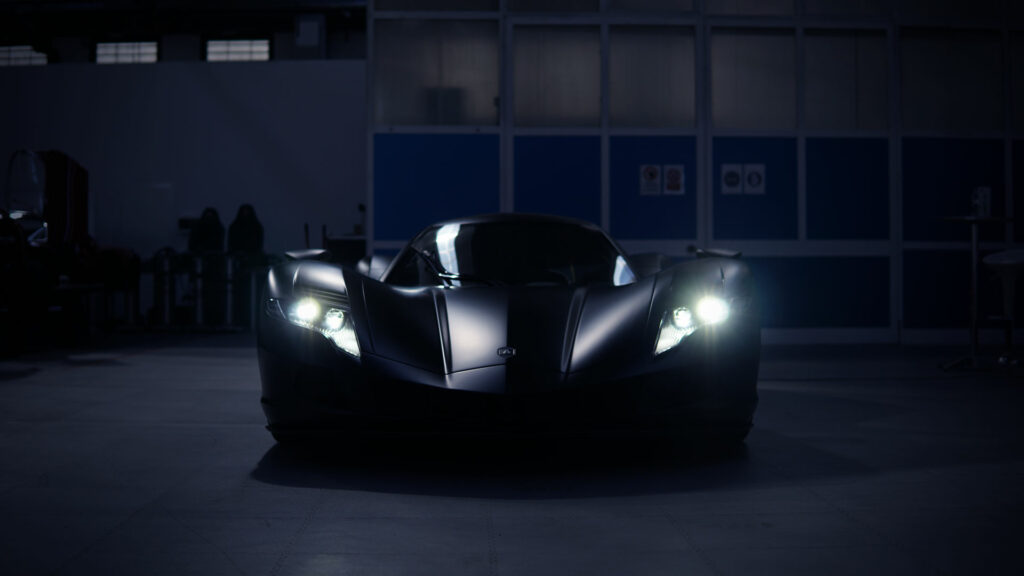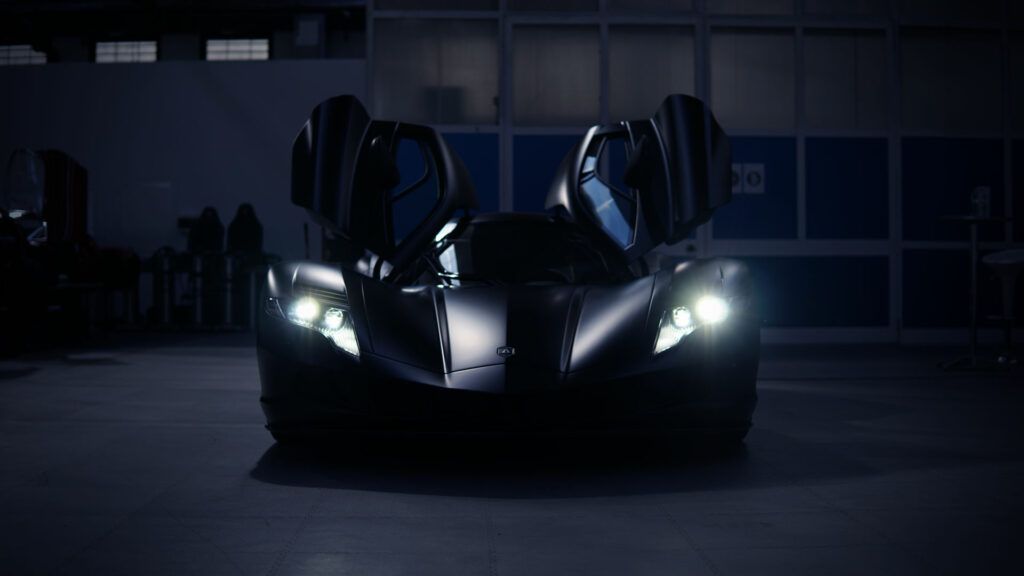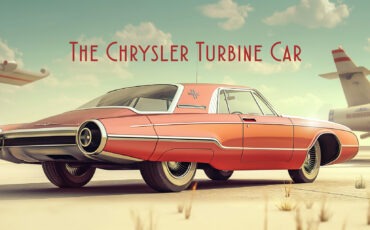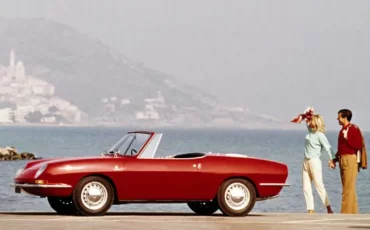At the intersection of innovation and automotive excellence, the Aspark Owl emerges as a breathtaking testament to engineering prowess. Boasting a mind-boggling acceleration that catapults it from zero to 100 kilometers per hour in less than two seconds, the Aspark Owl isn’t just a hypercar; it’s a marvel of speed and electrifying performance.
Crafted by the Italian manufacturer Manifattura Automobili Torino (M.A.T.) for the visionary Japanese firm Aspark, this all-electric masterpiece has been in development since 2018 with a singular ambition: to claim the title of the fastest accelerating electric car in the world. With a limited production run of just 50 units and a price tag of €2.5 million, the Aspark Owl isn’t merely a vehicle; it’s an exclusive work of art destined to redefine the boundaries of automotive excellence. From its conceptual unveiling at the 2017 Frankfurt Auto Show to its awe-inspiring production version showcased at the Dubai International Motor Show in November 2019, the Aspark Owl has captured the imagination of enthusiasts worldwide, setting a new standard for electric hypercars and leaving a trail of adrenaline in its wake.
Introducing Manifattura Automobili Torino
Founded in 2014, M.A.T. stands as a crucible where automotive special projects come to life, seamlessly blending the artistry of carrozzieri with cutting-edge technological research.
In a captivating interview with Riccardo Garella, he unveils the essence of M.A.T.’s mission—to transform automotive dreams into tangible, high-performance realities. From design to engineering to manufacturing, M.A.T. navigates the entire spectrum, specializing in one-off, few-off, and very limited serials production.
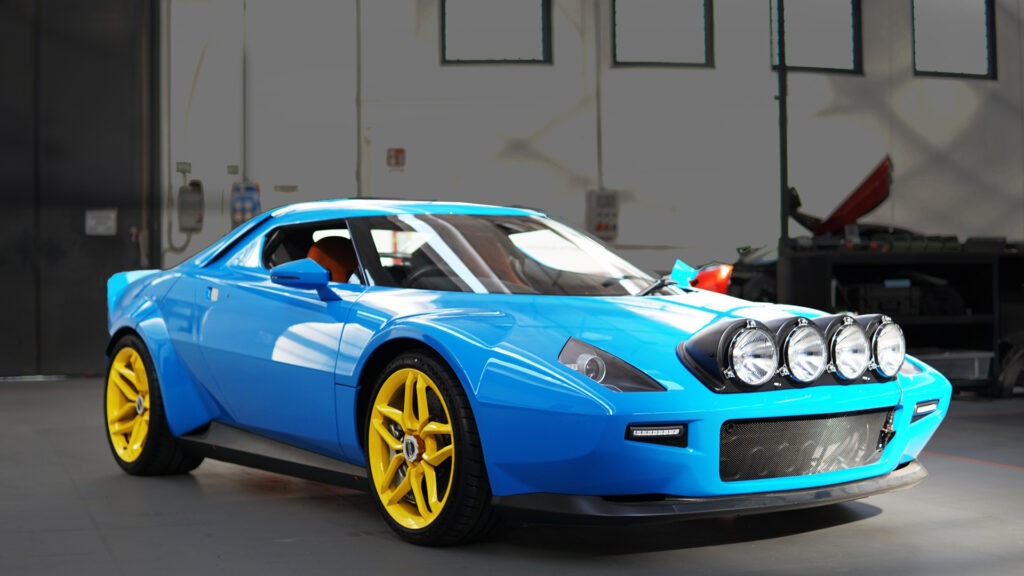
The spotlight shines on two remarkable projects spearheading M.A.T.’s legacy: the iconic new Stratos, a modern reinterpretation of the 1970s legend, and the groundbreaking Aspark Owl, an electric hypercar pushing the boundaries of technology and engineering in the niche manufacturing sector.
Garella proudly defines M.A.T. as a boutique car manufacturer—a dynamic team capable of breathing life into automotive dreams, from conceptualization to the moment the tires meet the road. Their commitment to being both humble and concrete is encapsulated in a simple yet powerful motto: “We do cars.” This philosophy reflects their dedication to making dreams a reality, one exceptional project at a time.
The Aspark Owl - The Brief
The genesis of the Aspark Owl is a tale unlike any other—an audacious challenge laid down by the Japanese powerhouse, Aspark, igniting a journey towards automotive excellence. Tasked with crafting an electric hypercar capable of accelerating from 0 to 100 kilometers per hour in under two seconds, Manifattura Automobili Torino (M.A.T.) embarked on an unprecedented odyssey.
While electric hypercars were uncharted territory for M.A.T., they embraced the challenge with characteristic determination. Their approach began with meticulous feasibility studies to ascertain the viability of Aspark’s ambitious vision. Once assured of the goal’s achievability, M.A.T. delved into the heart of the project—the development phase.
Distinguished by their role as integrators of cutting-edge technologies and components, M.A.T. leveraged existing advancements as a springboard for innovation. They meticulously dissected Aspark’s requirements, identifying the precise systems and technologies necessary to achieve the blistering acceleration demanded by the client.
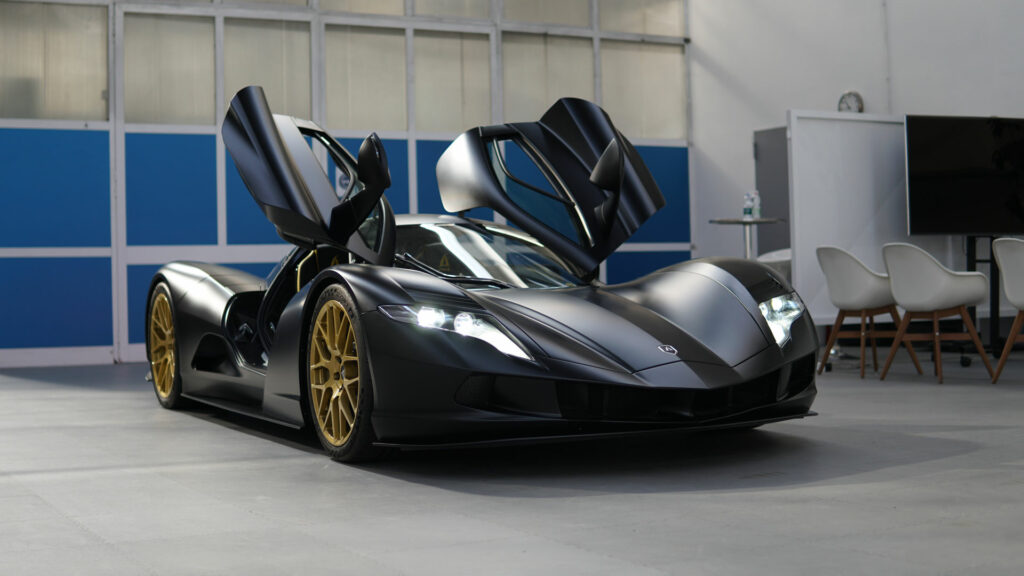
Yet, Aspark’s vision extended beyond sheer performance. With a desire for a design that pushed the boundaries of automotive aesthetics, Aspark presented M.A.T. with a distinctive challenge—to create a vehicle standing under one meter in height. This stringent brief, coupled with the imperative for unprecedented acceleration, encapsulated the essence of the Aspark Owl project—a fusion of innovation, precision, and uncompromising vision.
The story of the Aspark Owl is one of relentless pursuit—an unyielding commitment to transcending limits and redefining what’s possible in the realm of automotive engineering. And as the narrative unfolds, it unveils not just a remarkable hypercar, but a testament to the power of collaboration, ingenuity, and the pursuit of automotive perfection.
Crafting the Aspark Owl: Engineering Marvels, Compromises, and Unparalleled Performance
The development journey of the Aspark Owl wasn’t just about engineering breakthroughs; it was also about reimagining the interior experience. With the challenge of accommodating batteries and maintaining an ultra-low profile, conventional seating arrangements became impractical. This prompted a radical redesign, resulting in a unique interior concept.
Instead of traditional seats, the Aspark Owl boasts upholstery pads directly connected to the chassis via a carbon fiber structure. This not only maximizes space efficiency but also enhances the driver’s connection to the vehicle, reminiscent of Formula 1 or race car seating positions. The result is an intimate cockpit where every element is meticulously tailored around the driver, offering a blend of luxury and performance.
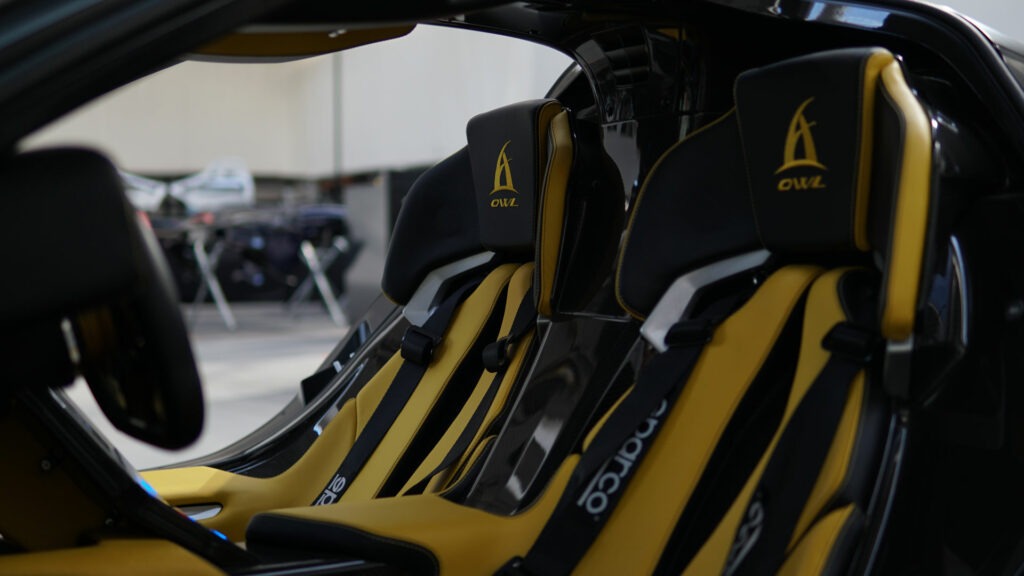
Customization options extend beyond mere aesthetics, allowing clients to personalize color schemes, materials, and stitching. Despite the compact layout, the interior feels surprisingly roomy, providing ample comfort without compromising on the exhilarating driving experience.
At the core of the Aspark Owl lies a marvel of engineering— a carbon fiber monocoque chassis weighing a mere 120 kg (265 lb). This lightweight yet robust construction ensures exceptional strength and agility, essential for achieving the car’s extraordinary performance benchmarks.
To optimize aerodynamics and stability, the Owl features a meticulously crafted carbon fiber bodywork, complemented by strategic design elements such as an active rear wing and wing mirrors. The integration of double wishbone suspension with hydraulic dampers and torque vectoring further enhances handling precision, offering unparalleled control on any terrain.
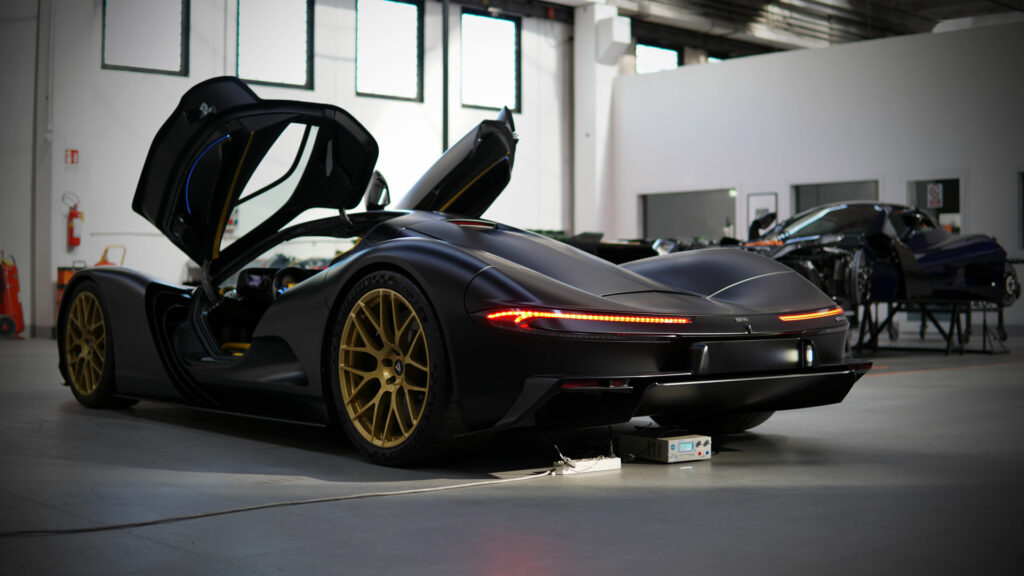
Developing an electric hypercar capable of sub-two-second acceleration presented formidable technical hurdles. Managing weight distribution, battery efficiency, and tire performance were critical aspects that demanded meticulous attention.
M.A.T.’s expertise in system integration and cutting-edge technology played a pivotal role in overcoming these challenges. Through meticulous engineering and software optimization, they achieved the perfect balance of power and torque required to meet the ambitious acceleration targets.
From conceptualization to production, M.A.T. exemplifies niche manufacturing excellence. With in-house capabilities spanning design, engineering, and production, they orchestrated every aspect of the Aspark Owl’s journey, culminating in a groundbreaking achievement that pushes the boundaries of electric hypercar performance.
Performance Beyond Boundaries: Aspark Owl Breaks Speed Barriers
In the latest round of exhilarating tests, the Aspark Owl once again demonstrated its prowess, achieving a mind-boggling acceleration from 0 to 100 kilometers per hour in an astounding 1.72 seconds. This staggering feat solidifies the Owl’s position as a frontrunner in the realm of electric hypercars, pushing the boundaries of what was once considered impossible.
The performance accolades continue with the Aspark Owl achieving a remarkable 0 to 300 kilometers per hour acceleration time in under 10 seconds—an unrivaled accomplishment that crowns it as arguably the fastest accelerating electric hypercar in existence.
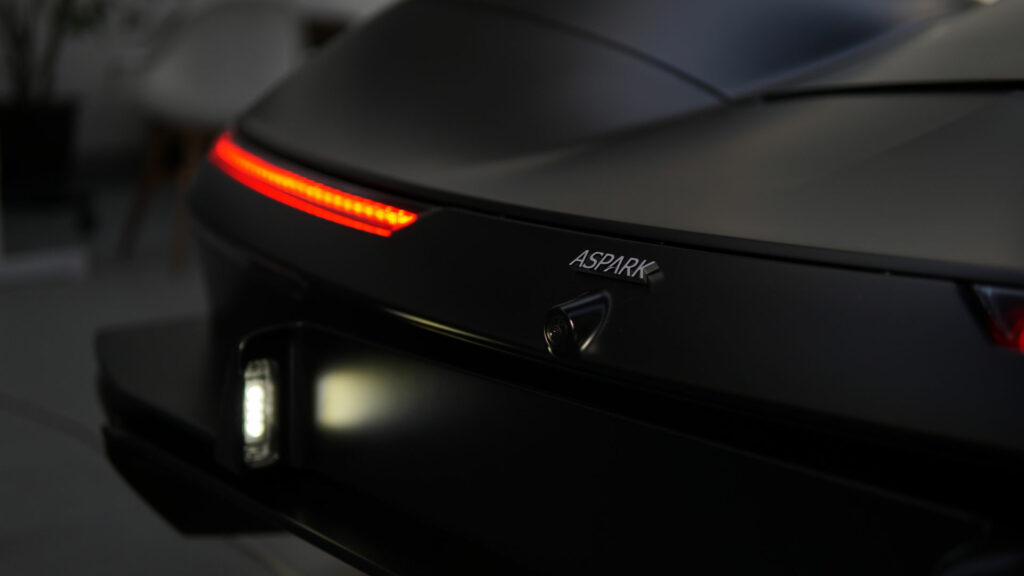
Not stopping at acceleration, the Aspark Owl is set to redefine top speeds, reaching an astonishing 418.429 kilometers per hour (260 miles per hour). If accomplished, this would officially make it the fastest accelerating production car globally—a title that underscores the cutting-edge engineering and relentless pursuit of performance by the Aspark team.
But speed isn’t the Owl’s only triumph; it marries performance with practicality. The electric hypercar boasts an impressive range of approximately 250 miles, making it not only a speed demon but also a formidable contender in the electric vehicle market. What’s more, the Aspark Owl redefines the notion of downtime, with a rapid charging capability that allows the car to be fully charged in just 40 minutes.
As the Aspark Owl continues to shatter records and redefine expectations, it stands as a testament to the boundless potential of electric hypercars. With each acceleration, it propels us into a new era of automotive excellence, where speed, sustainability, and cutting-edge technology converge in a symphony of engineering brilliance.

